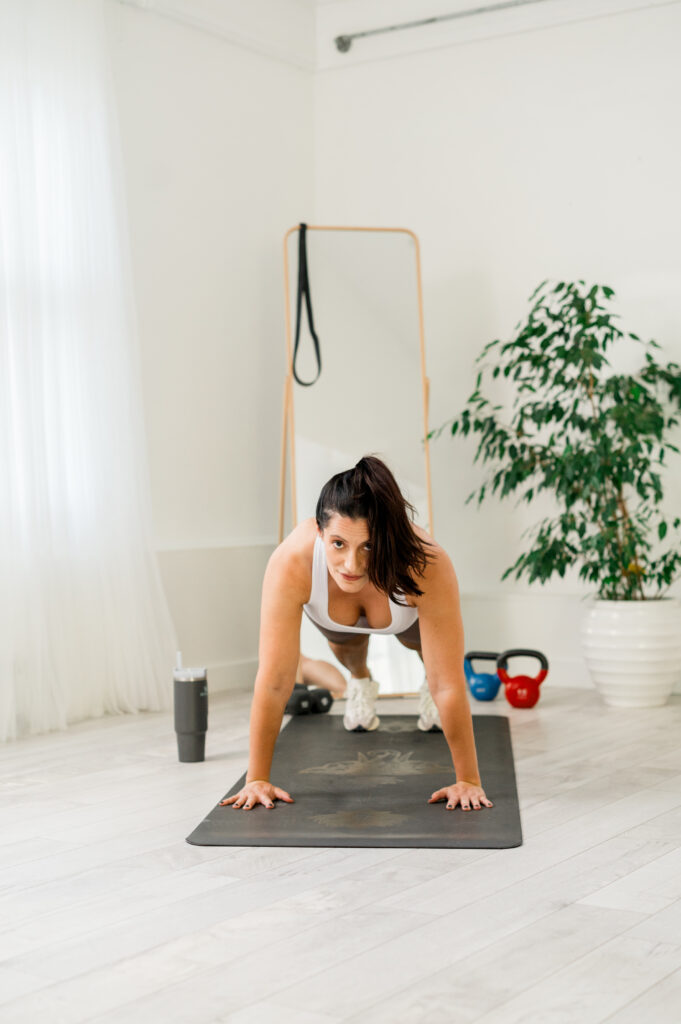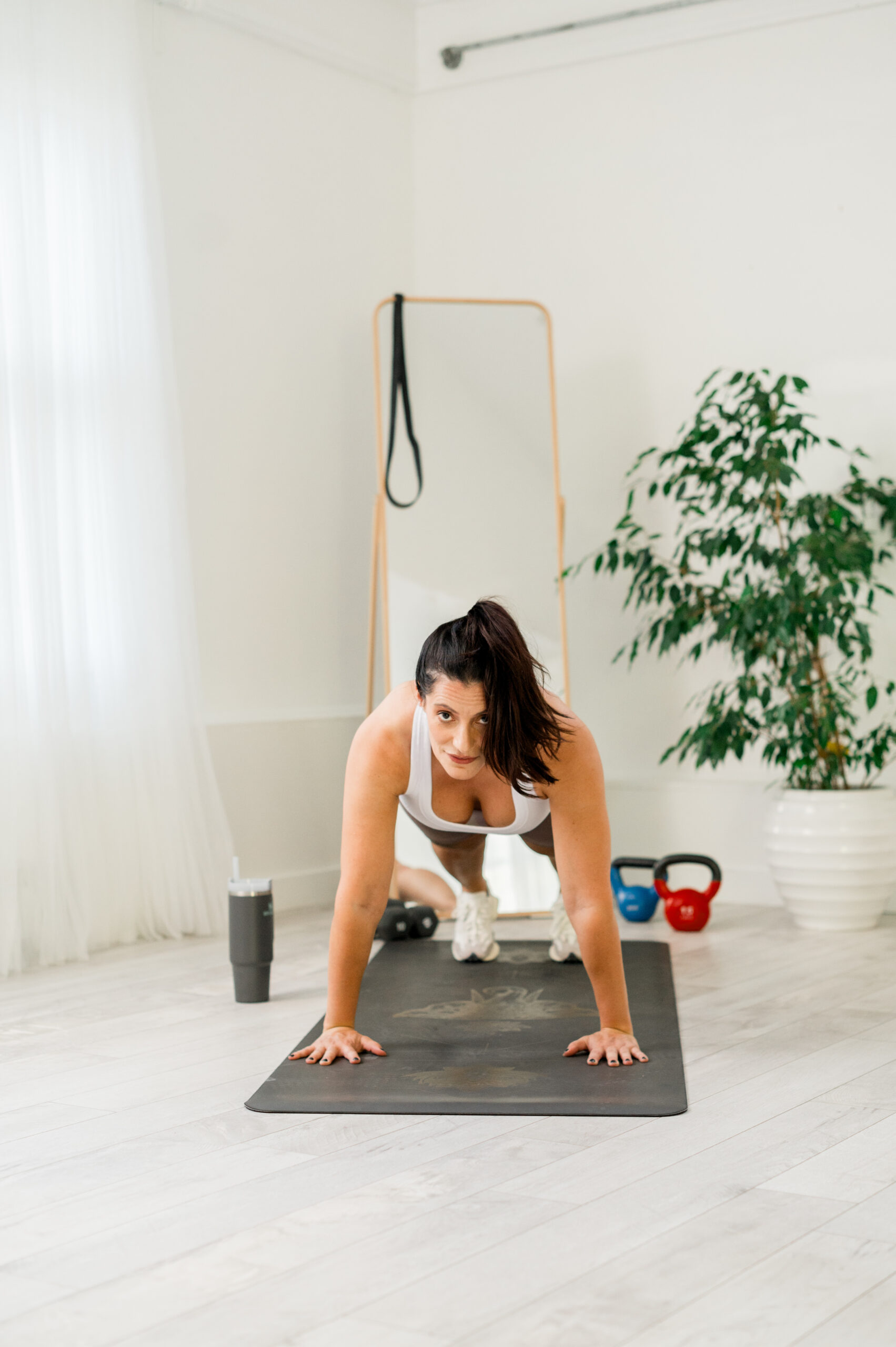Connect with Us
Grab the freebie!
HEALTH TIPS
RECIPES
WORKOUTS
Categories
Get my free Macro Calculator to figure out how you should be eating to best serve your body.
Improving Health with 3-Minute Movement Breaks
Tags:
You’ve probably heard that sitting for a long time isn’t good for you—and it’s true! Now, there’s proof that adding small breaks with simple movement throughout the day can make a difference, especially if you spend most of your time sitting. According to new research, even short, frequent breaks with easy activities like walking or squatting can help control your blood sugar levels, especially if you’re overweight.

Why Sitting Too Long Is a Problem
We all know that sitting for too long is bad for us. It can lead to weight gain, type 2 diabetes, and other health problems, especially if you’re already overweight or not getting enough exercise. But why is sitting so bad? It’s all about what happens to your muscles when you don’t move. When your muscles are inactive, they can’t help control your blood sugar, which can lead to spikes that harm your health.
Understanding Blood Sugar and Insulin Spikes
Blood sugar, also known as blood glucose, is the sugar in your blood at any given time. Your body gets glucose from food, especially carbohydrates, using it as energy. Insulin is a hormone made by your pancreas that helps move glucose from your blood into your cells, where it can be used or stored for energy.
When you eat, your blood sugar levels rise, and your body releases insulin to help lower them. An “insulin spike” is when insulin rapidly increases in response to high blood sugar. If your body constantly needs to produce much insulin because of frequent spikes, it can lead to insulin resistance, which means your cells stop responding appropriately. This can eventually lead to health problems like type 2 diabetes.
The more active your muscles are, the better they use glucose, which helps prevent those big insulin spikes after eating.
What Science Says
In a recent study, scientists looked at how taking short breaks from sitting could affect blood sugar levels after eating (called your “post-meal glycemic response”). They compared people who sat without moving to people who took short breaks, either walking or squatting, throughout the day. The people in the study were all overweight and sat for over 8 hours straight—kind of like a typical day at work.
The results? Taking just three-minute breaks every 45 minutes made a big difference. People who took short breaks to walk or squat (one squat every 5 seconds for 3 minutes or 36 squats in a row) had much better blood sugar control—up to 21% lower levels after eating. And they didn’t need to do anything extreme—these were simple activities that anyone could do during the day.
Why These Simple Moves Work
The key is using your muscles. The study found that even short breaks—just standing up and moving a little—increased muscle activity in the legs and glutes (the muscles in the front of your thighs and your butt). When these muscles move, they help absorb sugar from your blood, which lowers your blood sugar after eating.
Interestingly, they also found that more intense movements—like squatting—worked even better. Squatting activated the glute muscles more than walking, which helped bring down blood sugar even more after eating. This means it’s about moving more and choosing movements that make your muscles work harder.
What You Can Do
If you want to be healthier and manage your weight, you don’t need a gym or fancy equipment to make a difference. Short, easy movements like walking around the room or doing a few squats can help keep your blood sugar steady.
If your job or schoolwork keeps you at a desk, try setting a timer to remind you to take a three-minute break every 45 minutes. Walk to another room, squat a few times, or just stand up and stretch. This helps control your blood sugar, gives you more energy, and helps you focus better throughout the day.
To-Do Checklist for Better Health
- Set a timer: Set a timer to remind yourself to take a three-minute movement break every 45 minutes.
- Take short breaks: Every movement break should last three minutes.
- Do muscle-activating movements: Choose activities that activate your large muscles, like squats, since these prove incredibly effective for controlling blood sugar.
- Incorporate light exercise into your routine: Remember, it doesn’t need to be intense (slow, not fast)—a short walk or squats can make a big difference.
- Stick to regular intervals: Consistency is vital. Make moving every 45 minutes a regular habit to help manage blood sugar levels and improve overall health.
Small Changes Can Make a Big Difference
This research shows what many of us have guessed for a long time—sitting too much isn’t great, but you don’t need to completely change your lifestyle to see improvements. Small breaks with light movement can make a big difference, especially for people at risk of health problems from being overweight. You can take an essential step toward better health by simply deciding to move a little more throughout the day.
Download The Perfect Squat checklist and blueprint to make sure your squat form is on point during your 3-minute movement breaks. A perfect squat helps you maximize muscle engagement and keep your joints safe.
